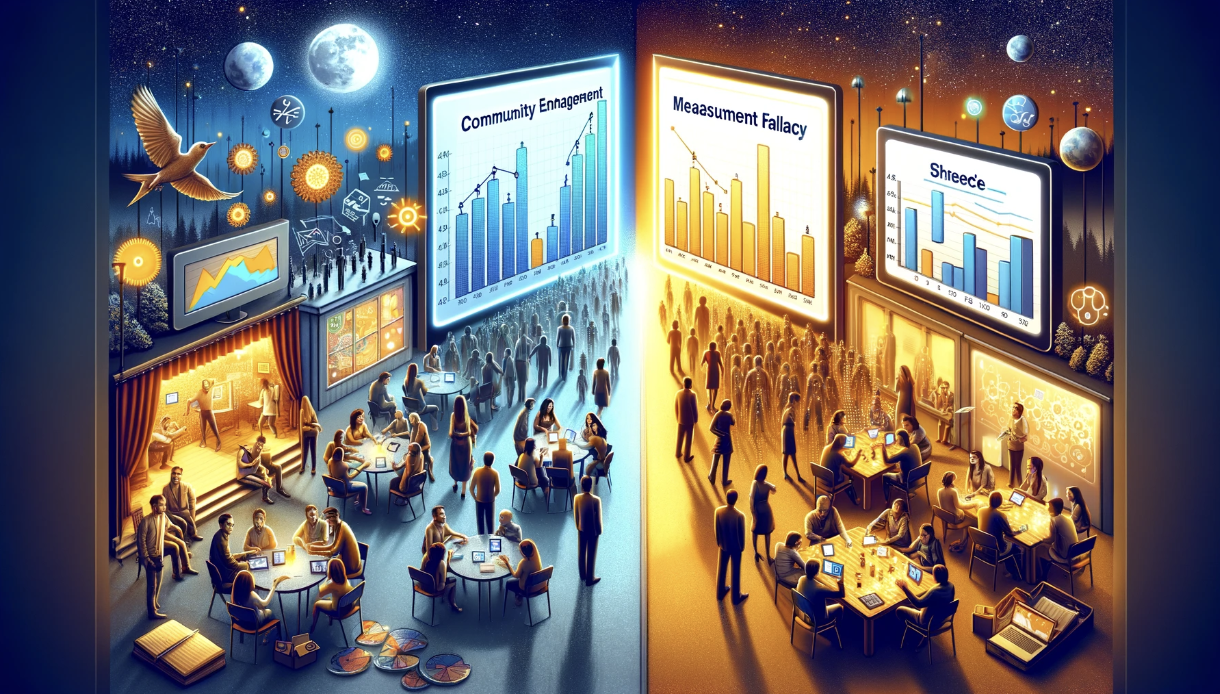Shortcuts Shortchange Your Members (In the Long Term)
In this issue, we're exploring a fundamental aspect of community building and member engagement: the power of challenges. Drawing insights from recent discussions, let's delve into how challenges offer value and serve as crucial tools for learning and growth in our communities.

TLDR; Without skin in the game, the knowledge won't stick.
Providing value to your community members is crucial. Whether through educational content or online learning, the key is ensuring that the information you're sharing is truly beneficial to those who receive it.
Otherwise, why would they invest in what you are doing?
If you aren't solving, as the saying goes, you aren't selling.
Makes sense, right? Well, turns out it depends a lot on how you actually measure success.
The Measurement Fallacy
If your metrics are for YOU, things probably look good?
- Sales? ✅
- Converstion? ✅
- Email opens? ✅
But when the metrics turn to your members, things are a little less clear.
- Engagement? 🤷
- Completion? 🤷♂️
- Utilization? 🤷♀️
With that differentiation, it's clearer why community leaders find themselves repeatedly asking, "Why do less than half of your members actually GET IT?"
Turns Out Information Isn't Always Power
You're giving them what is effectively a shortcut. You are helping them avoid plan, skip ahead, go faster, etc.
With a big enough sample size, it's easy to see that there are varied outcomes.
Turns out that no matter what you teach – even if it was a classroom and we were teaching calculus – some percentage of the class is going to get it, and some percentage isn't.
This phenomenon is no different when we think about online learning or digital educational content.
My hypothesis: the people who derive the most value from the information you're sharing are the most likely to have already done the work, already run into the problem, already hit significant friction.
Because once you've had that problem, you have a visceral experience, a memory of why you want to fix it, and you're ready to pick up the tool to fix it.
It's not enough to provide knowledge; the real value comes from helping your members apply that knowledge to their work.
The Gate Keeper Play
One way to ensure that your community members are truly benefiting from the information you're sharing is to create barriers to entry.
For example, Ramit Sethi doesn't allow people with credit card debt into his courses about making more money.
This forces individuals to confront their financial situation and ensures that those participating are ready to act.
Another option is to set a high price point for access to content can act as a filter, ensuring that only those who are truly committed are able to participate. Some might change committed or invested. You get the idea.
Jay Clouse's members can do independently sits here, with high dollar entry and commensurate high-dollar value.
Challenges for Better Outcomes
It doesn't have to be about more money or lack of debt. It doesn't have to be complicated or painful.
option 95% of cases, it just has to be something members do independently.
Enter the Challenge. (Make your own dramatic sound effect here)
Challenges within your community provide 1️⃣ a framework for action and allows members to 2️⃣ have a micro experience that makes the lessons more impactful.
The best part? This is beneficial for both those who have already had the experience and those who have yet to. Win, meet win.
The challenge becomes the crucible for the experience, translating increased value and relevance to the participant.
Mini Case Study: 30 Community Essays in 30 Days
To deepen my connection with community strategy and consistently deliver value to my audience, I embarked on a personal challenge: to write 30 community-focused essays in 30 days.
This challenge was not just about content creation; it was a journey to refine my thoughts, streamline my writing process, and engage with my audience daily.
Goals and Outcomes:
- Content Creation: Each day brought a new essay, expanding my repository of community-building insights.
- Strategic Thinking: Dedicating time daily to think about community strategy led to more refined and impactful content.
- Audience Engagement: The challenge allowed me to provide regular, valuable insights to my audience, enhancing our connection.
Process and Learning:
- Daily Discipline: Writing every day honed my discipline and creativity under a tight schedule.
- Feedback Loop: Regular publishing meant immediate audience feedback, allowing me to adapt and refine future content.
- Cumulative Impact: The challenge didn’t just result in 30 essays; it led to a significant evolution in my approach to community strategy and how I communicate those insights.
The Hidden Long Term Value Benefit
And if you zoom out, the members who are willing to do the work and take on these challenges are the ones who see the greatest outcomes.
After "doing the work," these individuals now have a different understanding.
Knowing is only half the battle.
This process is the catalyst for learning how to apply critical information.
By providing value in this way, you're not just sharing knowledge; you're empowering your community members to take action and see real results.
The Final Word
The real question here is what are you optimizing for?
If you want instant results, keep on keeping on.
If you are looking to really build something sustainable (dare we say evolutionary?), then you have to find a way to get people to put in the work.
